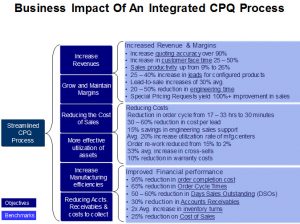 One thing that inbound marketing really does well is help you get to know your target audience. By defining your audience personas, you can determine what content to create and how and where to market it for the biggest bang for your buck. As you dive into your inbound strategy and look at how your website reflects your buyer’s journey, you may start thinking about optimizing your site for search engines.
One thing that inbound marketing really does well is help you get to know your target audience. By defining your audience personas, you can determine what content to create and how and where to market it for the biggest bang for your buck. As you dive into your inbound strategy and look at how your website reflects your buyer’s journey, you may start thinking about optimizing your site for search engines.
Search engine optimization is constantly evolving. Google changes its algorithms all the time and changes often make it seem hard to keep on trend. I recently spent quite a bit of time researching rich snippets – the text that appears under Google search results and is intended to give searchers more information about what they might find on a site. Much of my research came from 2013 and had lots of ties to Google Authorship (now dead). Despite this, rich snippets still hold a lot of promise when it comes to your SEO strategy. This is a great example of how small details can make a big difference in your SEO strategy.
Given the large amount of information pertaining to SEO, you may not be focused on how to optimize your website for different visitors. For example, are you optimizing your site for the different stages of the buyer’s journey? The answer – probably not. Here are the three types of searches you probably aren’t optimizing for, but should be.
Navigational searches
Navigational searches are those searches where people already know the name of your company or organization. For instance, if you search for Amazon in the Google search bar, you already know where you want to go, but maybe you were just lazy and didn’t want to put in the dot com.
How to win at navigational searches
You can win at navigational searches by “just being” and really focusing on the title in your SEO. People know you, they know where they want to go and therefore are more likely to convert. From their search behavior, you can deduce that these visitors probably fall more in the middle of the funnel.
Informational searches
You know how you go and ask Google a question? “Where is the best restaurant in Annapolis?” or “Who is the best eye doctor in Annapolis?” That’s an informational search. To win at these searches, you need to be winning at inbound marketing because these are the bread and butter of what everyone thinks of when they think of winning at SEO and inbound. Want to get found for informational searches? Make sure your website is keyword optimized, and you’re pushing out information that answers your prospects’ questions. Hubspot has said that this “is where the rubber meets the road of SEO. This is where the power of content is truly unleashed.”
How do you win at informational searches?
Define your niche and your brand. Create a brand name that uses what you want to be found for in the name (for example, think about the Content Marketing Institute – they are winning at informational searches because their name includes the key phrase “content marketing”). Use content – landing pages, blog posts and premium content – to build your authority and make it a central part of your inbound marketing strategy.
Transactional searches
People that do transactional searches are at the bottom of the sales funnel. They use terms like “purchase” or “buy” or “deal.” The google algorithm determines that the user – from these terms – wants to make a purchase, so it providesthem with relevant informatin on search engine results pages (SERP) to helpl them make that purchase.
Unfortunately, winning at transactional searches is tough. This is rich snippets can be used to provide information (microdata) to your audience via search results. Unfortunately, there are hundreds of options for strucuring and creating this microdata, so the beginner SEO guru or webmaste may be a bit overwhelmed. Thankfully, Google (God bless you Google!) makes everything easy and has a rich snippet tool that allows you double (or triple) check your enhancements.
While some have said these little rich snippets are irrelevant since the untimely death of Google authorship, I say not so fast.
Why You Should Use Rich Snippets
Rich snippets – complicated as they may be for the HTML beginner – can really optimize your search results. They are especially relelvant for B2C businesses, but because all businesses, whether you’re B2B or B2C, market to people, there may be a place for rich snippets with your SEO strategy. By using them you can:
- Increase your click-through rate.
- Draw attention to your search results.
- Increase your rankings (and who doesn’t want that?).
- Increase your qualified traffic (really, thats what we all want).
If you’re still uncertain, check out schema.org for more information on rich snippets. The great thing about these bits of code is that they help optimize your site across all of the major search engines: Google, Bing, and Yahoo! And despite what we all think about Google being king, the other search engines should not be completely forgotten about when it comes to your SEO strategy.
(268)
Report Post








